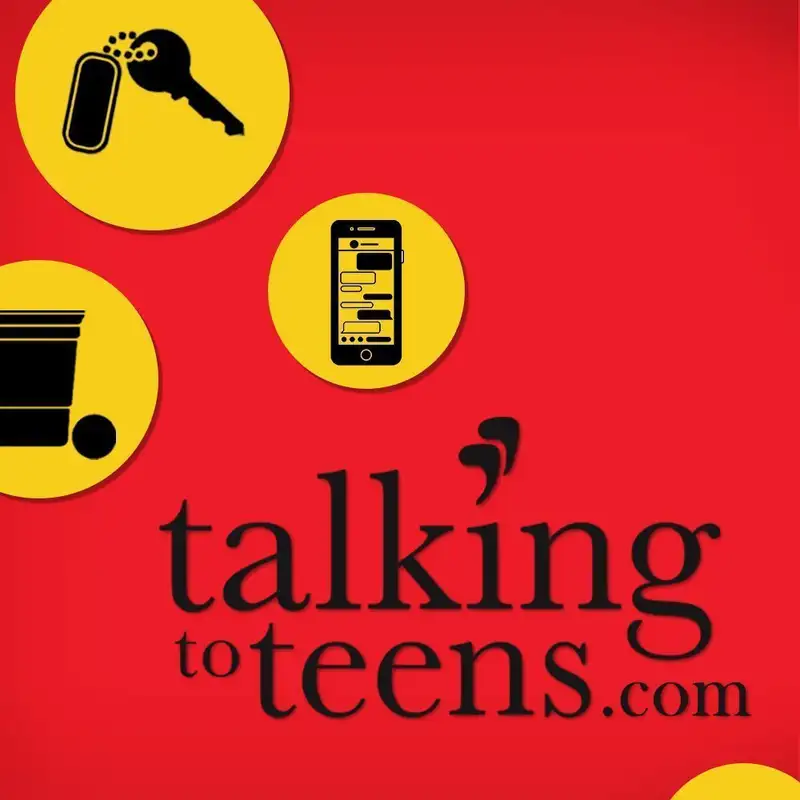Ep 8: Teens Who Think Creatively
Jim Davies, author of the book Riveted discusses how imagination and creativity work, and how can we help our teens to think outside of the box. He explains the key to raising teens who can think for themselves is to reward them when they take risks–even if the risks don’t end up turning out very well.
Full show notes
Failure. It’s something we’re all afraid of. Something we hope and pray to avoid. As parents, we want our children to be successful and will often do whatever we can to prevent our teens from failure. However, for creative programs that will help teens develop their own way of processing knowledge, failure can actually be beneficial.
Full show notes
Failure. It’s something we’re all afraid of. Something we hope and pray to avoid. As parents, we want our children to be successful and will often do whatever we can to prevent our teens from failure. However, for creative programs that will help teens develop their own way of processing knowledge, failure can actually be beneficial.
Failing doesn’t mean we aren’t capable of success. It means we are willing to take on challenges outside of our comfort zone—even if we aren’t successful right away. If we find ourselves never failing, then maybe we’re playing it too safe. While it may be difficult to watch your teen fail, allowing them room to do so is a key part of helping them grow. And it’s an essential part of creative programs that will help teens learn how to take shortcomings as inspiration for self-improvement.
This lesson is one of many from today’s episode, which is all about different ways to help our kids become accomplished, productive creative thinkers. The road to success is not easy, and if parents and educators want to foster creative programs that will help teens, we need to ask ourselves these important questions about how kids can become their best selves:
What am I doing that might harm my teen’s chance of developing productive creative habits?
How can we navigate the line between encouragement and criticism?
In this episode, I sit down with Jim Davies, cognitive science researcher and author of the book Riveted: The Science of Why Jokes Make Us Laugh, Movies Make Us Cry, and Religion Makes Us Feel One with the Universe. Jim studies some incredibly interesting topics such as human behavior, imagination, and how people think creatively. When it comes to talking about how we can come up with good creative programs that will help teens, we should listen to what Jim has to say.
Beyond his wise words on parenting and the importance of failure, he shares his knowledge of how creativity works within the human brain. He identifies two types of creative thinking: divergent and convergent. Divergent thinking refers to the influx of ideas a person has, while convergent thinking refers to how a person groups ideas into meaningful patterns. The true aim for creative programs that will help teens is to achieve both, and failure is a necessary ingredient. Teaching teens to fail is a part of the convergent thinking learning process. By engaging in trial and error methods and expanding past their comfort zones, teenagers can identify new ways to manifest their creative ideas.
Jim expands on this idea by citing the story of a man who’s creative thinking changed human knowledge forever: that of Sir Isaac Newton. Newton was able to radically alter our understanding of the universe by bridging seemingly different disciplines of science to reach unique innovations. He was one of the first people to suggest that the physics that govern everyday objects are the same mechanics that control the sun, moon, and planets.
Newton’s alternative way of thinking is one that we should encourage in creative programs that will help teens. Not every teen needs to chart the stars, but they should be encouraged to take big leaps in order to make great discoveries like Newton. He left his comfort zone behind and opened himself up to criticism and failure. By bringing together unrelated concepts and making bold, unprecedented claims, Newton made discoveries that were unlike anything people had ever seen or heard. For these kinds of innovations to occur, we have to be willing to push ourselves past what we know. If we accept the risk of failure, we allow ourselves opportunities to make discoveries that could impact ourselves—and even society at large.
The same idea applies to finding creative programs that will help teens within academics. Even though success may feel like the only option, we need to understand that failure or struggle are integral parts of helping teens become smarter individuals. It’s not productive for students to always succeed; what’s important is how educators respond to their failing or struggling students. For example, Jim discusses how as a professor, he sometimes encounters students with good ideas, but terrible writing. He discusses how it may seem appropriate to just fill the entire page with “red marks” or corrections, but how this ends up being counterproductive.
What it does, Jim explains, is teach students to hate writing or see themselves as incapable of being a good writer. If you punish failure instead of praising it, students may exist in a state where they are afraid to push themselves. It’s also just as bad, he claims, to turn in a perfectly written assignment which has nothing to say or provides no original thought. Those facilitating and operating creative programs that will help teens need to understand the importance of giving kids room to fail. We want to teach them that failure doesn’t mean they have no potential, but instead that they are reaching past their comfort zones to become the best version of themselves.
Jim warns that we have an overly complimentary education system which offers kids too much praise. In Jim’s opinion, our schools should stop giving every kid a participation trophy because it encourages them to stay in their comfort zones. Instead, schools should teach kids how failure can be a means of growing and improving themselves. When it comes to creative programs that will help teens, we need to focus on helping them develop more grit so that they can move past obstacles when life gets difficult.
This situation begs the question, however: how can we find balance between encouragement and criticism as a parent or educator? While young people need to be given praise to inspire their confidence, it’s also important to nudge them with criticism so that they will continue to evolve and develop their skills. Jim points out that parents and creative programs that will help teens should encourage teens’ behavior rather than their abilities. In doing so, we can teach the importance of hard work and good habits, instead of leading them to believe that their innate talents need no improvement.
It's this behavioral component which relates back to the previously discussed idea of convergent thinking, or using our brain to devise strategies to implement our unique ideas. In order to find creative programs that will help teens harness their energy into something substantial, we need to look at how they develop habits. By teaching your teen to value hard work and innovative thinking over empty praise or easy success, you can help them grow towards a more productive and exciting future in whatever field they decide to pursue.
My talk with Jim spans many interesting topics related to the creative mind and how as parents, we can embrace failure to prepare our kids for successful futures. Although it may feel frightening to praise failure, punishing it may keep your child in an overly safe arena. Your children need room to make mistakes and mess up, so they can learn. The more they experience trial and error, the more likely they are to become original, outside-of-the-box thinkers. The best way we can build creative programs that will help teens is by understanding these principles and using them to spur smarter teens.



